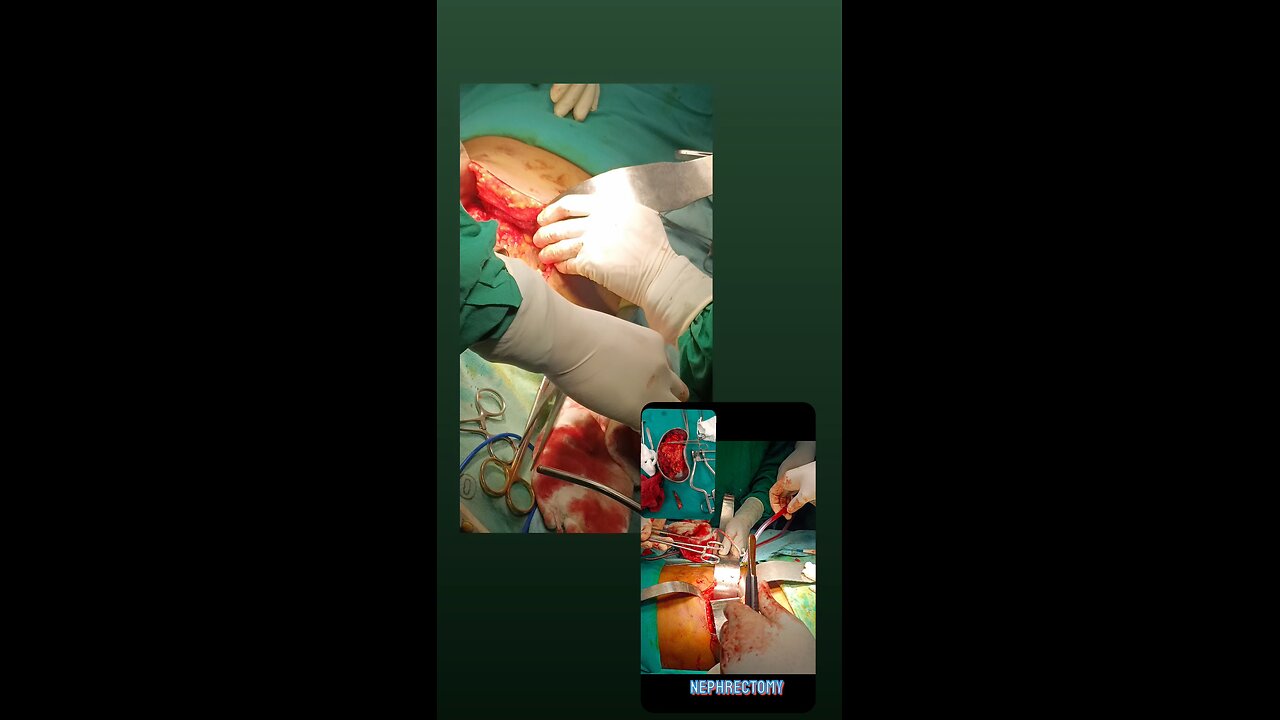Premium Only Content

nephrectomy surgery
nephrectomy is a surgical procedure to remove all or part of a kidney. It's typically performed to treat kidney cancer or remove a diseased kidney, but it can also be done to remove a healthy kidney for transplant. There are two main types: partial nephrectomy (removing part of the kidney) and radical nephrectomy (removing the entire kidney).
Types of Nephrectomy:
Partial Nephrectomy:
Also known as "kidney-sparing" surgery, this procedure removes only the diseased or damaged portion of the kidney, leaving the healthy tissue intact.
Radical Nephrectomy:
This surgery involves removing the entire kidney, along with the surrounding fat and adrenal gland (in some cases), and sometimes nearby lymph nodes.
Nephroureterectomy:
This procedure removes the kidney and the ureter (the tube that carries urine from the kidney to the bladder), sometimes with a portion of the bladder.
Reasons for Nephrectomy:
Kidney Cancer:
Nephrectomy is a common treatment for both cancerous and non-cancerous kidney tumors.
Other Kidney Diseases:
Infections, injuries, and birth defects can necessitate nephrectomy.
Kidney Donation:
A healthy kidney can be removed from a living or deceased donor for transplantation.
Palliative Care:
In some cases, a nephrectomy can be performed to relieve pain or other symptoms associated with advanced kidney cancer.
Surgical Approaches:
Open Nephrectomy: This involves a larger incision to access the kidney.
Laparoscopic/Robotic Nephrectomy: This minimally invasive approach uses small incisions and specialized instruments, often with the aid of robotic assistance, to perform the surgery.
Recovery:
Recovery time varies depending on the type of nephrectomy and individual factors, but can range from a few weeks to several months.
Most people can live a healthy life with one functioning kidney or even with a portion of a kidney.
After surgery, it's important to follow your doctor's instructions for wound care, pain management, and activity restrictions.
-
 LIVE
LIVE
The White House
50 minutes agoAbove, Below & Beyond: A Presidential Special
862 watching -
 LIVE
LIVE
iCkEdMeL
31 minutes ago🔴 Redwood City Standoff Erupts in Gunfire | Police Shooting Update
171 watching -
 30:53
30:53
BonginoReport
6 hours agoMonica Kelsey: The Woman Who Is Saving Countless Babies - Nightly Scroll w/ Hayley Caronia (Ep.175)
75.8K14 -
 1:08:36
1:08:36
Kim Iversen
4 hours agoFrom Head Chopping to The Oval Office: Who is Al-Sharaa?
85K65 -
 LIVE
LIVE
The Bold Lib
1 hour agoBOLDCHAT: The Intolerant Left | Veteran's Day w/ANGELA BELCAMINO
97 watching -
 LIVE
LIVE
Quite Frankly
5 hours agoVeterans Day Lies, Legalized Betting, And More | Sal & J Gulinello 11/11/25
529 watching -
 LIVE
LIVE
Tundra Tactical
6 hours ago🛑LIVE NOW!! Dad Gamer Attempts To Dunk On Nerds
96 watching -
 1:45:14
1:45:14
Redacted News
4 hours agoBREAKING: Jeffrey Epstein's Israeli Mossad Connections EXPOSED in New Documents - Cover-Up Deepens
130K88 -
 1:14:16
1:14:16
vivafrei
6 hours agoKash Patel's Girlfriend Sues Elijah Schaeffer for $5 MIL Man Charged Over Portnoy Incident & MORE!
124K72 -
 1:53:37
1:53:37
The Quartering
6 hours agoWar Declared On ICE In Chicago, Massive Allegations Against Leftist Streamer Hasan, 600,000 Chinese
148K44